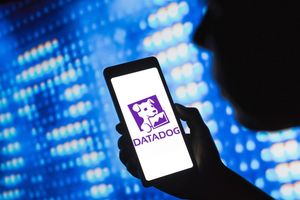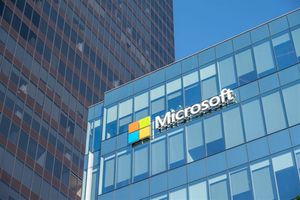Phase 2 data presented at the 40th Society for Immunotherapy of Cancer (SITC) Annual Meeting show deep and durable tumor regressions in heavily pre-treated melanoma patients, with a mild safety profile easily managed in outpatient setting; early signals of objective responses observed in patients with non-small cell lung cancer
Additional durable, complete responses observed in two patients with bladder cancer and head and neck cancer for more than two years, following treatment with imneskibart and low-dose aldesleukin
Imneskibart demonstrates clear competitive advantages in IL-2 class, with evidence that higher Teff/Treg ratio correlates with longer time on treatment and overall survival for patients
Phase 2 enrollment continues for cohorts in post-CPI-doublet failed melanoma and post-CPI +/- chemotherapy failed, PD-L1 positive non-small cell lung cancer
Aulos Bioscience, an immuno-oncology company working to revolutionize cancer care through development of its lead immune-activating antibody therapeutic imneskibart (AU-007), today presented promising new Phase 2 data from its ongoing study of imneskibart in patients with checkpoint inhibitor (CPI)-refractory melanoma and non-small cell lung cancer (NSCLC). The data were shared in a poster session at the Society for Immunotherapy of Cancer (SITC) 40th Annual Meeting in National Harbor, Maryland.
The new Phase 2 data demonstrate sustained and significant anti-tumor activity in patients with melanoma that progressed on prior doublet CPI therapy and early signals of objective responses in patients with NSCLC whose tumors progressed on prior CPI therapy, with or without chemotherapy. These findings strengthen previously reported results that a combination of imneskibart and low-dose, subcutaneous aldesleukin (recombinant human IL-2) exhibits unique activity in the interleukin-2 (IL-2) class. The data also reinforce that a persistent reduction in regulatory T cells (Tregs) coupled with a higher CD8/Treg ratio is associated with longer overall survival (OS), progression-free survival (PFS) and time on treatment for patients.
“Today’s data provide the most compelling support yet for our long-held view that imneskibart is clearly differentiated and has unmatched competitive advantages within the IL-2 class,” said Aron Knickerbocker, Aulos Bioscience’s president and chief executive officer. “We’re now seeing its ability to achieve deep and durable tumor shrinkages by expanding T effector and natural killer cells and activating the immune system, while reducing Tregs that suppress the immune system. No other molecule shows the same ability to increase the CD8/Treg ratio as imneskibart. What excites our team most is the clear link that we see between a higher CD8/Treg ratio and longer treatment duration as well as overall survival, which is making a real difference in patients’ lives.”
Key findings from the Phase 1/2 study of imneskibart, including the Phase 2 expansion cohorts in CPI-refractory melanoma and NSCLC, with data available on 93 patients as of the data cutoff date of September 29, 2025, are as follows:
Strong signal of anti-tumor activity in patients with melanoma who received imneskibart and low-dose aldesleukin without CPI therapy
- Six of 14 patients who received imneskibart and one loading dose of low-dose, subcutaneous aldesleukin continue on treatment, with ongoing deep and durable tumor shrinkages observed in patients who had progressed after receiving doublet CPI therapy (prior anti-CTLA-4 and anti-PD-1 and/or anti-PD-1 and anti-LAG-3).
- Three patients with the deepest tumor reductions continued treatment beyond one year: one patient with a 48% tumor reduction continued on treatment for 14 months; another patient with a 58% tumor reduction continues on treatment for more than 18 months; and a third patient with a complete response (100% reduction) in the target lesions continues on treatment for more than 21 months.
Early signs of anti-tumor activity in melanoma patients who received imneskibart, low-dose aldesleukin and nivolumab
-
Three of five patients with melanoma that progressed on prior doublet CPI therapy, and who received imneskibart as well as one loading dose of low-dose, subcutaneous aldesleukin and nivolumab (checkpoint inhibitor; anti-PD-1), continue on treatment.
- No dose-limiting toxicity occurred in the safety run-in.
- Initial signs of anti-tumor activity in very early clinical data were observed with the lower aldesleukin dose (45K IU/kg) used in the safety run-in. Now that the safety run-in has been cleared, patients are receiving the recommended Phase 2 aldesleukin dose of 135K IU/kg as a low, subcutaneous loading dose on Day 1. Imneskibart is given at 9 mg/kg intravenously (IV) every two weeks (Q2W), and nivolumab is given as 480 mg IV every four weeks (Q4W).
Early evidence of clinical activity in patients with PD-L1+ NSCLC who received imneskibart and low-dose aldesleukin alone or in combination with avelumab
- Initial signal of anti-tumor activity was observed in patients with PD-L1+ NSCLC who failed on prior CPI therapy with or without chemotherapy and received imneskibart and one loading dose of low-dose, subcutaneous aldesleukin alone or in combination with avelumab (checkpoint inhibitor with ADCC effector function; anti-PD-L1).
- Two patients with NSCLC that progressed on prior anti-PD-1 therapy-based regimens received imneskibart (9 mg/kg) Q2W and one loading dose of low-dose, subcutaneous aldesleukin in combination with avelumab (800 mg) Q2W. These patients experienced a 43% and 48% tumor reduction and one continues on treatment. Four of nine patients treated with the imneskibart/aldesleukin/avelumab regimen experienced tumor reductions.
Long-running complete responses observed in patients with cancers other than melanoma and NSCLC
- One patient with metastatic bladder cancer that progressed on an anti-PD-L1 treatment was treated with imneskibart Q2W and one loading dose of low-dose, subcutaneous aldesleukin, and has an ongoing confirmed metabolic complete response. This patient is now testing negative for circulating tumor DNA (ctDNA) and continues on treatment for nearly three years.
- One patient with metastatic nasopharyngeal head and neck cancer that progressed on five prior systemic therapies received imneskibart and low-dose, subcutaneous aldesleukin Q2W. This patient experienced a confirmed complete response after 20 months and continues on treatment.
Combination of imneskibart and low-dose, subcutaneous aldesleukin continues to exhibit unique pharmacodynamic (PD) effects in the IL-2 class, with a higher peripheral blood CD8/Treg ratio associated with better efficacy
- Longer durations of OS, PFS and time on treatment were observed in patients with melanoma who achieved at least a 2.1-fold increase over their baseline CD8/Treg ratio.
-
Durable decreases in Tregs and corresponding increases in CD8/Treg ratios were observed in patients with melanoma.
- The mean peripheral blood Treg absolute cell counts continue to decrease after dosing with imneskibart and low-dose, subcutaneous aldesleukin.
- The addition of nivolumab to imneskibart and low-dose, subcutaneous aldesleukin (45K IU/kg, the dose assessed in the safety run-in) does not affect the reduction achieved in the peripheral Treg population in the emerging data.
Continued mild and tolerable safety profile observed in all dose cohorts in Phase 1 and 2
- Most drug-related adverse events (AEs) were mild, Grade 1 or 2, with imneskibart and one loading dose of low-dose, subcutaneous aldesleukin alone or in combination with avelumab or nivolumab.
- A low rate of drug-related Grade 3 and 4 AEs previously observed with imneskibart and one loading dose of low-dose, subcutaneous aldesleukin continues to be observed with maturing data.
-
The addition of avelumab or nivolumab to imneskibart and one loading dose of low-dose, subcutaneous aldesleukin does not increase the rate of drug-related Grade 3 and 4 AEs in the emerging data.
- The most common Grade 3 or 4 AE was transient (3-7 days) lymphopenia that was not associated with adverse outcomes in any patient. Transient lymphopenia is a known effect of IL-2 treatment as lymphocytes traffic out of blood and into tissue.
- One patient receiving imneskibart and one loading dose of low-dose, subcutaneous aldesleukin experienced Grade 4 cytokine release syndrome (CRS). It resolved without tocilizumab using steroids, IV fluids and brief vascular pressor support. This patient was noted retrospectively to have subclinical elevated IL-6 (5x upper limit of normal) serum levels, likely due to an active case of gout at baseline.
The Phase 1/2 study of imneskibart is an open label dose escalation and expansion study, with the Phase 1 portion now complete. Phase 2 expansion cohorts evaluating imneskibart and a single loading dose of low-dose, subcutaneous aldesleukin continue to enroll patients with unresectable locally advanced or metastatic cutaneous melanoma who have failed prior doublet CPI therapy as well as patients with PD-L1+ NSCLC who have failed prior CPI therapy.
Phase 2 cohorts with checkpoint inhibitors also continue to enroll patients. In melanoma, a cohort evaluating imneskibart and a single subcutaneous loading dose of low-dose aldesleukin combined with nivolumab as a second-line treatment for cutaneous melanoma is enrolling patients who have not received a prior BRAF/MEK inhibitor. In NSCLC, a cohort is enrolling to evaluate imneskibart and low-dose, subcutaneous aldesleukin combined with avelumab in PD-L1+ NSCLC in patients who have failed prior CPI therapy with or without chemotherapy. Aulos anticipates presenting comprehensive clinical data from these Phase 2 expansion cohorts by mid-2026.
The poster, “Imneskibart, a human monoclonal antibody (mAb) that binds IL-2 and prevents CD25 binding, + low-dose subcutaneous IL-2: Phase 2 update on CPI-refractory melanoma and non-small cell lung cancer (NSCLC),” (Abstract 651) is accessible to meeting registrants as an electronic poster on the SITC 2025 virtual meeting platform. It is also available on the Aulos Bioscience website in the Abstracts and Publications section.
To learn more about the imneskibart clinical trial program, please visit ClinicalTrials.gov (identifier: NCT05267626). For patients and providers in the U.S., please visit www.solidtumorstudy.com. For patients and health professionals in Australia, please visit www.solidtumourstudy.com.
About Imneskibart
Imneskibart (AU-007) is a human IgG1 monoclonal antibody designed by leveraging artificial intelligence that is highly selective to the CD25-binding portion of IL-2. With a mechanism of action unlike any other IL-2 therapeutic in development, imneskibart redirects IL-2 to reinforce anti-tumor immune effects. This is achieved by preventing IL-2, either exogenous or secreted by effector T cells, from binding to trimeric receptors on regulatory T cells while still allowing IL-2 to bind and expand effector T cells and NK cells. This prevents the negative feedback loop caused by other IL-2-based treatments and biases the immune system toward activation over suppression. Imneskibart also prevents IL-2 from binding to CD25-containing receptors on eosinophils, as well as vasculature and pulmonary endothelium, which may significantly reduce the vascular leak syndrome and pulmonary edema associated with high-dose IL-2 therapy.
About Aulos
Aulos Bioscience is an immuno-oncology company working to revolutionize cancer patient care through immune-activating antibody therapeutics that direct patients’ immune systems toward killing tumor cells. Matching world-class machine learning from co-founder Biolojic Design with an in-depth understanding of the immune system, Aulos’ initial clinical candidate, imneskibart (AU-007), is a human antibody designed by leveraging artificial intelligence that harnesses the power of IL-2 to induce tumor killing while limiting the immunosuppression and toxicities typically associated with this validated pathway. The company was founded by Biolojic Design and Apple Tree Partners (ATP) and is led by pioneers in the fields of artificial intelligence, antibody development and cancer immunotherapies. For more information, visit www.aulos.com, X (@AulosBioscience) and LinkedIn.
View source version on businesswire.com: https://www.businesswire.com/news/home/20251107006073/en/
Contacts
info@aulosbio.com
Media inquiries: Mike Beyer, Sam Brown LLC / 312-961-2502 / mikebeyer@sambrown.com






